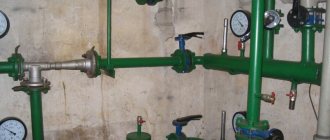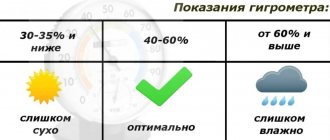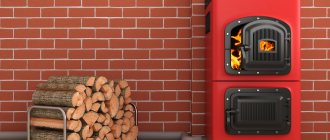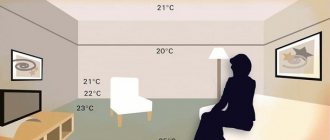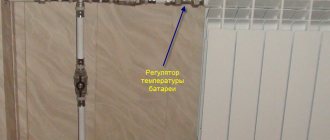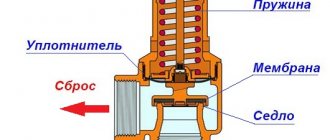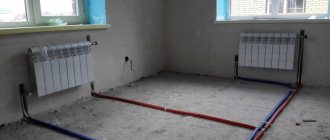Battery temperature
Even in winter it can be cold in the apartment. Perhaps due to such reasons, ranging from airiness of the system, in this case it is recommended to work with professionals or yourself, ending with the unsuitability of radiators. Here, you need to call a specialist.
When answering the questions - what temperature should the batteries be in an apartment during the heating season according to the law and what temperature should the batteries be in winter - there is no correct answer.
There are different situations, and the only way out is to measure the t of the air in the room itself, but when there is a gunner heating system, then max t is +95. For an optimal feeling in the radiator room, the temperature should be in the range of +80-90°C.
The impact of temperature on the characteristics of the coolant
In addition to the factors listed above, the temperature of the water in the heating pipes affects its characteristics. The method of functioning of gravity heating systems is based on this. As the water heating value increases, it expands and circulation appears.
Coolants for heating systems
But when using antifreeze, exceeding normal temperatures in radiators can lead to different results. Therefore, for heating with a coolant other than water, it is necessary to first determine the permissible heating values. This does not apply to the temperature of the central heating radiators in the apartment, since such devices do not use antifreeze-based liquids.
Antifreeze is used if there is a risk of exposure to low temperatures on radiators. Unlike water, it does not change from liquid to crystalline at 0 degrees. But if the heat supply operation exceeds the norms of the temperature table for heating to a greater extent, the following phenomena may be observed:
- foaming This contributes to an increase in coolant volume and pressure level. There will be no reverse process when the antifreeze cools;
- the appearance of limescale. Antifreeze contains mineral components. If the heating temperature in the apartment is violated, they precipitate. Over time, this leads to clogged pipes and radiators;
- increase in density. Malfunctions of the circulation pump may occur if its rated power was not designed to handle such situations.
We recommend: How to repair aluminum heating radiators yourself?
Therefore, it is much easier to monitor the water temperature in the heating system of a private home than to control the heating level of antifreeze. Moreover, substances based on ethylene glycol emit gases that are harmful to humans when evaporated.
Today they are almost never used as a coolant in autonomous heating systems. Before using antifreeze in heating, it is necessary to replace all rubber seals with paranitic ones. This is due to the high level of permeability of this type of coolant.
Options for normalizing heating temperature
Minimum water temperatures in the heating system are not considered the main threat to its operation. This affects the microclimate in living rooms, but does not affect the operation of the heating supply. If the water heating norm is exceeded, emergency situations may occur.
Safety group for autonomous heating
When creating a heating scheme, you need to provide a list of measures aimed at preventing a critical increase in water temperature. First of all, this will lead to increased pressure and stress on the inside of pipes and radiators. If this happened once and lasted a short time, then the heating parts will not be damaged.
But such cases appear under the constant influence of specific factors. Most often this is the incorrect operation of a solid fuel boiler. To avoid breakdowns, it is necessary to upgrade the heating in the following way:
- installation of a security group. It consists of an air vent, a bleed valve and a pressure gauge. If the water temperature reaches a critical level, these parts will eliminate excess coolant, thereby ensuring normal circulation of the liquid for its natural cooling;
- mixing unit. It connects the return and supply pipes. Additionally, a two-way valve with a servo drive is mounted. The latter is connected to the temperature sensor. If the heating level exceeds the norm, the valve will open and a mixing of hot and cooled water flows will occur;
- electronic heating control unit. It distributes the water temperature in different parts of the system. If the thermal regime is violated, it sends a corresponding signal to the boiler processor to reduce power.
These measures will prevent improper heating operation at the initial stage of the problem. It is most difficult to control the water temperature in systems with a solid fuel boiler. Therefore, for them, special attention must be paid to the selection of indicators of the safety group and the mixing unit.
YouTube responded with an error: The request cannot be completed because you have exceeded your quota.
- Related Posts
- How can you paint central heating radiators?
- How to install central heating on a balcony?
- How to repair bimetallic heating radiators with your own hands?
- How do solar panels work for heating a home?
- What types of regulators are there for central heating radiators?
- Which central heating batteries to choose?
Heating standards in 2021 – 2021
SNiPami - responsible for the standard temperature of batteries during the heating season. In case of violation, an administrative, possibly criminal, case follows.
Below is a list of the normal temperature of batteries in an apartment during the heating season 2021 - 2021:
- Living space +18C;
- Corner apartment +20C;
- Kitchen minimum +18C;
- Bathroom +25C;
- In the presence of cage and vestibule stairs, minimum +16C;
- In the elevator +5C;
- If there is an attic or basement, then +4C.
Why are there cold radiators in the apartment?
Very often situations arise when it becomes very cold outside, and the temperature of the water in the heating pipes does not increase. Moreover, often the coolant is not poured into the pipes at all. The reason for this lies, most likely, in the service organization’s dishonest attitude towards its responsibilities.
Among the probable reasons for the lack of heat in the house are:
- failures and breakdowns of heating system elements;
- system repair work not completed;
- presence of air pockets in the heating circuit.
In cases where the temperature of the water in the batteries does not rise due to preventive or repair work in the general heating system of the house, you will only have to wait until they are completed. But if the reason lies in air plugs in the circuit, you need to either open the Mayevsky valves on the radiators and drain it, or contact a service organization. Within 24 hours, they must send a specialist to blow out the pipes and restore coolant circulation.
Measurements
First, it is worth understanding that in buildings with many apartments, air heat measurements begin to be taken in certain places. Starting from the plank, the thermometer should be at a minimum height of 1.5 m and from the outer walls the length of which is 1.0 m.
Note!
Laying quartz vinyl tiles with your own hands step by step: instructions, subtleties, methods, features, installation, “Click-Drop”
Suspended ceiling Armstrong (125 photos): device, plate sizes, types, installation, calculation and installation
Textured paint for walls: types, how to apply it yourself, instructions, composition, varieties, photos of new designs
It is worth considering that when t is underestimated from the norm, then, if confirmed, the owners are given a discount of 0.15%. Final measurements are taken at the end of every 60 minutes.
If confirmed, a measurement report is drawn up, one remains with the tenant. It is worth remembering that utility workers will fix the entire problem within a week, so there is no reason to worry if the temperature has not risen after two days.
Air exchange
For more comfortable and high-quality living in an apartment building, utility workers came up with one more thing - an air exchange barograph. There are several indicators to ensure that the air in the house is constantly changing.
- In residential premises with an area of 18-20 m2, the air exchange is 3 m3/h per square meter.
- In the kitchen there is 60 m3/h, provided there is a hob with two burners, if there are three burners then 75 m3/h, four then 90 m3/h.
- In a bathroom with an area of 25 m2, the multiplicity becomes 25 m3/h.
- Just like in the bathroom, a bathroom with an area of 25 m2 is then 50 m3/h, in a toilet, if the area is 16 m2, the multiplicity is 25 m3/h.
It is impossible for the temperature in the apartment to be taken into account, but the air exchange is not. They are interconnected and must be taken into account as a whole; only with such consideration can we talk about a comfortable life.
Temperature standards for the heating system in an apartment building
The heating circuit in apartment buildings is built in cooperation with a centralized system to which the pipes are connected. Through them, the coolant is directed to the apartment building, where its further supply is regulated by inlet valves. After this, the water goes through the risers and eventually ends up in the radiators and radiators of each apartment.
The described processes, as well as everything related to the rules for providing the population with utility resources, are reflected in the Decree of the Government of the Russian Federation dated May 6, 2011 No. 354 “On the provision of utility services to owners and users of premises in apartment buildings and residential buildings” (hereinafter referred to as Decree No. 354). Heating quality requirements are set out in Section VI of Appendix No. 1 to the rules of Decree No. 354.
In addition, detailed rules for the provision of heating services are prescribed in the Order of Rosstandart dated June 11, 2014 No. 544-st “GOST R 51617-2014. National standard of the Russian Federation. Housing and communal services and management of apartment buildings. Public utilities. General requirements" (hereinafter - GOST R 51617-2014) and "GOST 30494-2011. Interstate standard. Residential and public buildings. Indoor microclimate parameters”, approved by order of Rosstandart dated July 12, 2012 No. 191-st (hereinafter referred to as GOST 30494-2011).
These acts establish the parameters of the coolant for the heating system of an apartment building. Thus, the temperature of the coolant (water) when supplied to the system is equal to the temperature of the water when it leaves the heating boiler. As a rule, the coolant should be brought to a temperature of 130-150 °C, but this indicator also depends on the outside temperature in the region.
Typically, the water leaving the boiler should have a temperature of 115 °C.
However, the standard temperature in the heating system can be within 95 ° C or 105 ° C (for different systems).
Next, to create comfortable conditions in the room, the proper condition of the parameters of the riser, which conducts water from the heating unit to the apartment, is ensured. They vary depending on the summer and winter seasons.
Of course, in practice, the temperature of the coolant in the riser depends on the operation of the thermal power plant and on heat loss on the way to the house. However, the riser temperature in winter should be in the range of 70-90 °C.
Warm water supply
The coolant is the water that we are so accustomed to turning on every day in our bathroom.
As one way to check what temperature the water is, you can simply insert a thermometer under the stream. If within fifty to seventy degrees Celsius, this is the norm; deviations can also be a maximum of four degrees.
It is worth remembering that each device has its own deviation scale, so when the result is obtained, you need to add one or two degrees.
Factors on which temperature depends
In order for the entire heating system to work smoothly and without interruptions, you will need, first, a temperature chart of the water, that is, the coolant inside the system. Further, it is on it that a certain, required level of heating of the temperature of the water, that is, the coolant, will be revealed.
But do not forget that third-party factors can also influence this.
It will be possible to calmly and without unnecessary difficulties determine the temperature of the coolant at the moment. And only then the data we received can be compared with sanitary standards. This must be done after a certain time.
Complaints
When the owner has personally measured the temperature, if the apartment is cold, the owner has every right to call the emergency service. It doesn't matter whether it's over the phone or in writing. After registration, specialists arrive at the resident’s address and accurately measure the temperature of the living space.
Note!
Choosing a heated floor: water, infrared, film, rod, cable, resistive, self-regulating, pros and cons + instructions
Kitchen renovation in Khrushchev (155 real photos): new designs, layout options, furniture placement and zoning of a small kitchen
Decorative plaster: types for interior wall decoration, design photos, instructions for application and combination in the interior
- As a rule, the departure of housing and communal services occurs very quickly. In a maximum of half an hour, they will already be at your door.
- If the housing and communal services campaign did not fulfill its requirements, and the temperature did not rise, or even worse, it has every right to contact other campaigns.
- To re-complain, you can send a letter to: “Regional Housing Inspectorate”; "Prosecutor's Office"; "Rospotrebnadzor".
- It is worth mentioning that you can immediately send complaints to housing and communal services and higher authorities.
